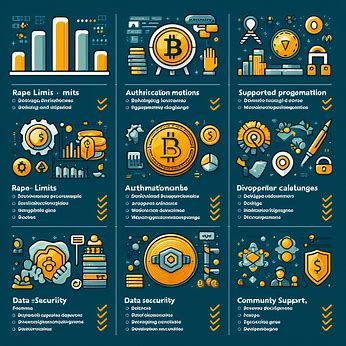Solana and Polkadot are two high-flyers in cryptocurrencies and blockchain technology. But which one is the better investment? Here is the answer to the question, “Which is better, Solana or Polkadot?”.
What is Solana?
Knowing which is better, Solana or Polkadot? Making comparisons is the right thing to do to know the differences and similarities. Here is an explanation of what Solana is:
Solana is a high-performance blockchain platform designed for scalability and speed. It uses a proof-of-history consensus mechanism along with proof-of-stake to achieve transaction throughputs of over 65,000 per second. Some key features of Solana include:
- Extremely fast transaction speeds and low latency
- Low transaction costs of just $0.00001 per transaction
- Support for smart contracts and decentralized applications (dApps)
- Growing ecosystem of DeFi, gaming, and NFT projects built on Solana
What is polkadot?
Polkadot is a next-generation blockchain protocol that enables interoperability and scalability across multiple chains. Created by Ethereum co-founder Gavin Wood, Polkadot aims to solve issues like blockchain silos and limited throughput. Key aspects of Polkadot include:
- Ability to connect multiple specialized blockchains (parachains) into one unified network
- Shared security model where parachains leverage the security of the central relay chain
- Cross-chain communication allows tokens and data to transfer between chains.
- On-chain governance gives all stakeholders a voice.
Scalability and performance
When it comes to scalability and transaction throughput, Solana has a clear advantage over Polkadot. Solana’s design allows it to process an astounding 65,000+ transactions per second (TPS), making it one of the fastest blockchains in existence.
This high performance is achieved through a combination of its proof-of-history (PoH) consensus, parallel transaction processing, and other optimizations.
In contrast, Polkadot itself is not focused on maximizing TPS on its main relay chain.
Instead, Polkadot aims to enable scalability through its multi-chain architecture. By offloading transactions and computation to parallel parachains, the network can scale massively without bottlenecks.
However, the individual parachains will need to have their own scaling solutions.
So while Solana wins in terms of raw speed, Polkadot’s approach is more about scalability through spreading the load across multiple chains. Both approaches have merits, but Solana is the clear winner if you’re looking for the absolute fastest transaction speeds.
Related: How to Buy Koda Cryptocurrency
Decentralization and security
Knowing which is better, Solana or Polkadot?, we shouldn’t overlook the decentralized and security comparison.
Polkadot has some advantages when it comes to decentralization and security. Polkadot uses nominated proof-of-stake (NPoS) to select validators, which helps promote decentralization.
Validators are chosen based not only on their stake but also on factors like past performance.
Additionally, Polkadot has a unique shared security model where all parachains connected to the relay chain benefit from its pooled security. This makes it easier for fledgling projects to get up and running with robust security.
Solana also uses proof-of-stake, but with a higher concentration of tokens staked by fewer validators currently. There are efforts underway to further decentralize the network over time, though. And Solana has undergone several security audits to help bolster its defenses.
Both Solana and Polkadot use validator rotation (cryptographic sorting) to make it harder to attack the network. But Polkadot’s shared security and emphasis on decentralization give it an advantage in this area.
Developer Ecosystem and Tooling
Both Solana and Polkadot are seeing strong growth in their developer communities and available tooling. However, Solana seems to have more advantages currently.
Solana offers several SDKs for building applications, including the Solana web3.js library and the Rust-based Anchor framework. There’s also integration with popular tools like Metamask and Phantom wallets. Solana’s fast speeds and low costs make it attractive for developers building high-performance dApps.
The Solana ecosystem is particularly vibrant in areas like DeFi, NFTs, and blockchain gaming. Popular projects built on Solana include:
1. Serum: decentralized exchange (DEX) and DeFi ecosystem
2. Raydium is an automated market maker (AMM) and liquidity provider.
3. Metaplex: Solana’s standard protocol for NFTs
4. Star Atlas: is a space exploration NFT gaming metaverse.
The Polkadot ecosystem is growing rapidly, with promising projects like:
- Acala, a decentralized stablecoin and DeFi hub
- Moonbeam is an Ethereum-compatible smart contract platform.
- Astar is a dApp hub supporting multiple virtual machines.
So while both ecosystems are growing, Solana seems to have more momentum and mindshare with developers currently, especially for DeFi and NFT use cases. But Polkadot’s developer community is highly engaged, and the tooling is maturing quickly.
Key Takeaways
1. Solana offers extremely high transaction speeds and low costs, making it well-suited for high-performance dApps and use cases like DeFi and NFTs.
2. Polkadot excels in interoperability, shared security, and scalability through its multi-chain architecture of parachains connected to the relay chain.
3. Solana currently has more advantages in terms of developer adoption, tooling, and ecosystem growth, especially in DeFi and NFTs. However, Polkadot’s developer community is highly engaged and growing rapidly.
4. Polkadot has some advantages in decentralization and security through its nominated proof-of-stake (NPoS) consensus and shared security model. Solana is working on further decentralizing its validator set over time.
5. Both platforms have strong long-term potential and are likely to coexist in the future blockchain ecosystem. Developers and investors should evaluate the trade-offs based on their specific needs and priorities.
6. Solana and Polkadot are both seeing rapid growth and adoption, but they are still relatively new platforms compared to incumbents like Ethereum. Both still have risks and challenges to overcome.
7. The cryptocurrency space is fast-evolving, and competition is heating up with other scalable blockchain platforms like Cosmos, Avalanche, Cardano, and more also vying for market share.
Frequently Asked Questions
1. What is the main difference between Solana and Polkadot?
The main difference is that Solana focuses on maximizing transaction speed and throughput on a single chain, while Polkadot aims to enable scalability and interoperability across multiple connected chains (parachains). Solana can process over 65,000 transactions per second, while Polkadot’s Relay Chain is designed more for coordinating consensus and communication between chains.
2. Which platform has lower transaction fees, Solana or Polkadot?
Solana has extremely low transaction fees, currently averaging around just $0.00001 per transaction. Polkadot’s transaction fees can depend on the specific parachain but are generally low as well. However, Solana’s hyper-efficient design allows it to keep fees lower than almost any other blockchain.
3. Can Ethereum dApps be used on Solana or Polkadot?
Polkadot is more directly compatible with Ethereum dApps. Parachains like Moonbeam are Ethereum-compatible smart contract platforms that allow easy porting of Solidity contracts. Solana has its own virtual machine and contract languages like Rust and C, so Ethereum dApps would need to be rewritten. However, Solana’s Neon EVM is in development to allow Ethereum dApp compatibility.
4. What consensus mechanisms do Solana and Polkadot use?
Solana uses a combination of proof-of-history (PoH) and delegated proof-of-stake (DPoS) to achieve high throughput and fast block times. Proof-of-history enables timestamp verification to prevent spam and increase efficiency. Polkadot uses nominated proof-of-stake (NPoS) on its relay chain, and parachains can use their own consensus mechanisms like proof-of-stake or proof-of-authority.
5. Where can I buy Solana (SOL) and Polkadot (DOT) tokens?
Both SOL and DOT are widely available on major cryptocurrency exchanges like Binance, Coinbase, Kraken, Huobi, and others. They can be bought with fiat currencies like USD or traded for other cryptocurrencies like BTC and ETH. Always research and compare fees and security when choosing an exchange. And remember to store your tokens safely in a secure wallet.








